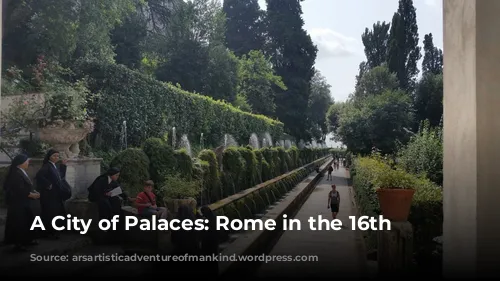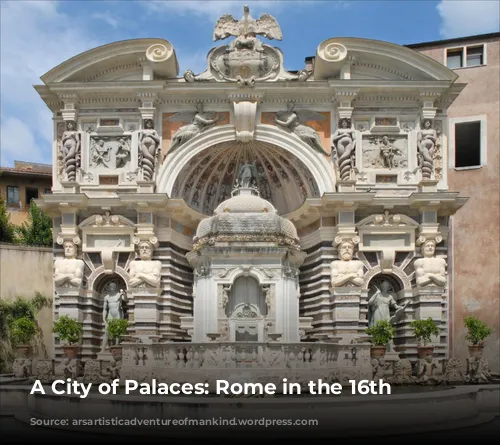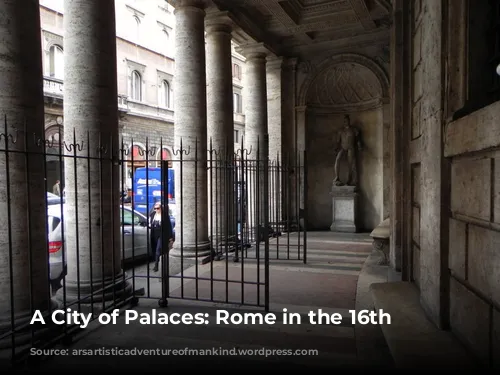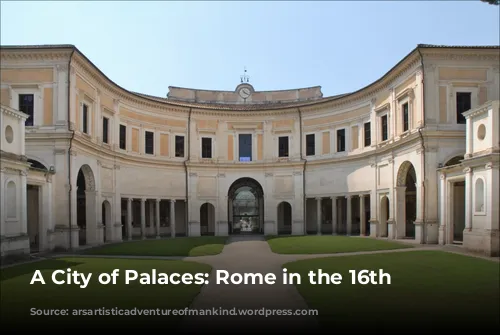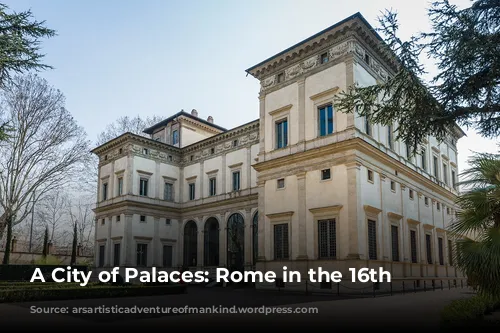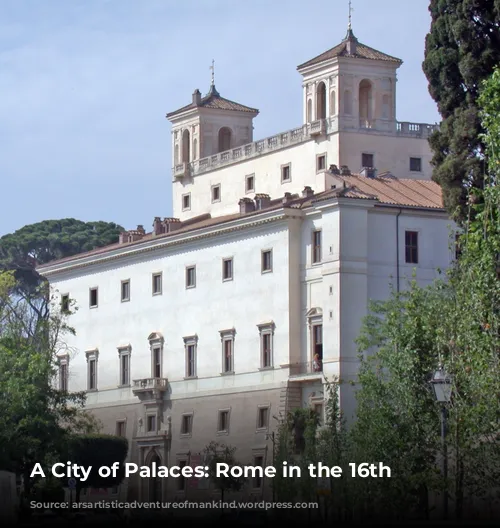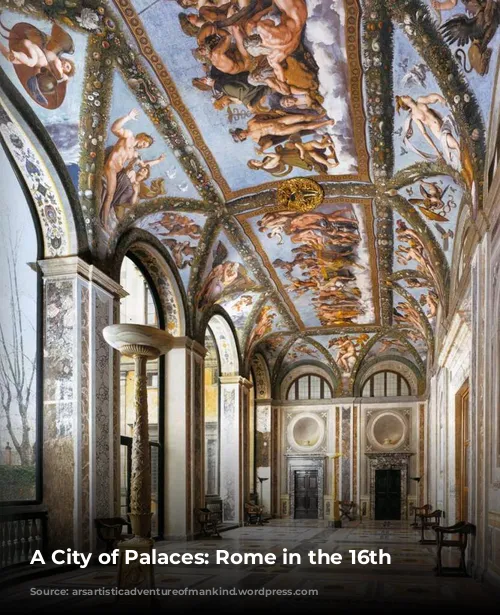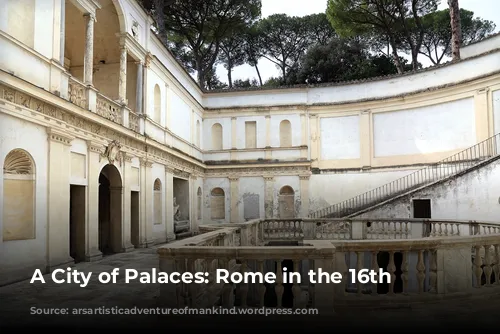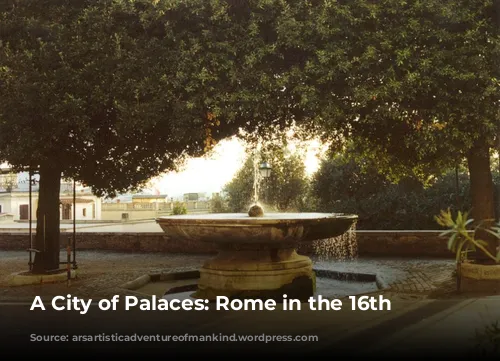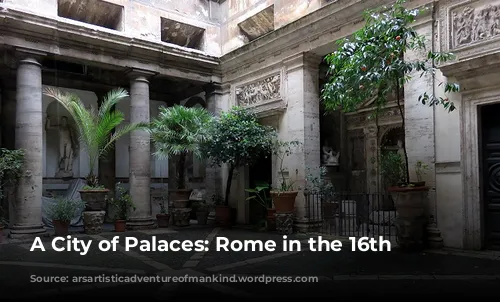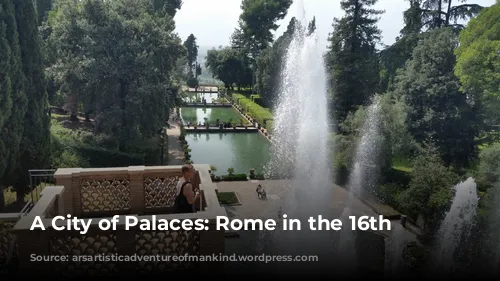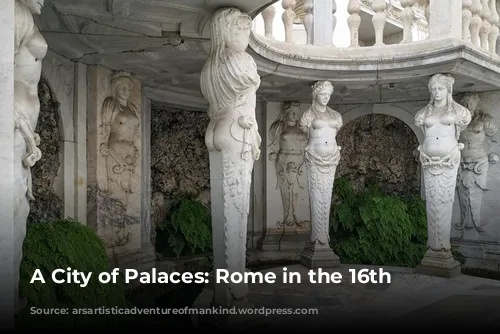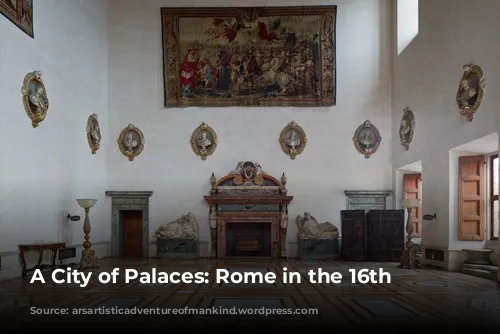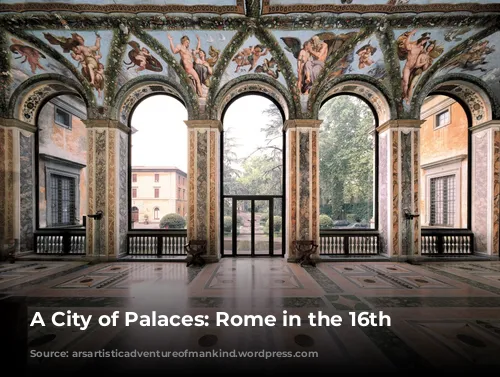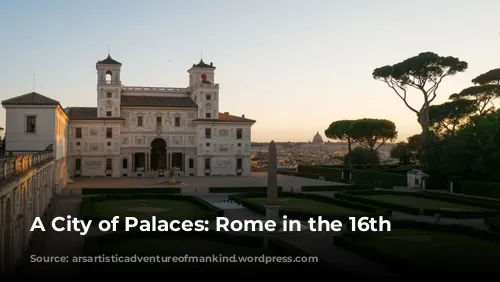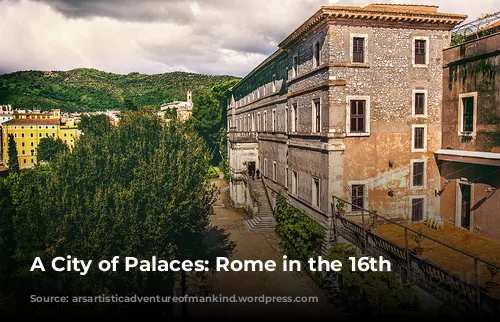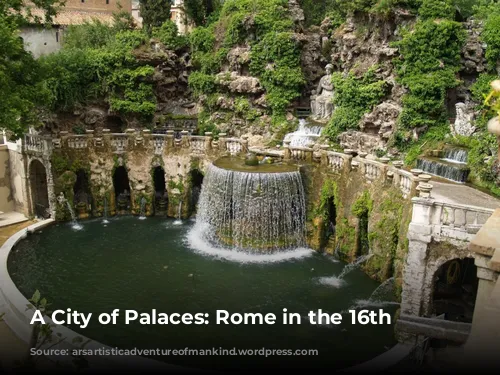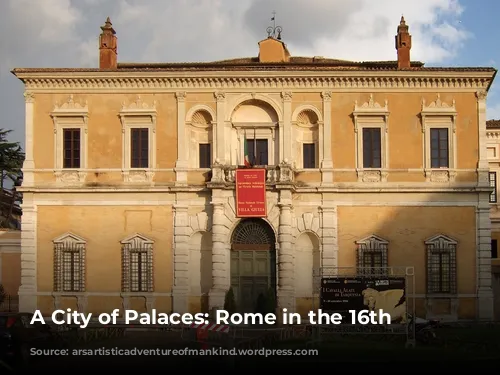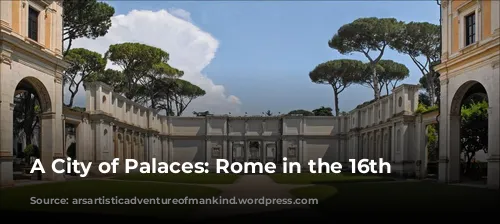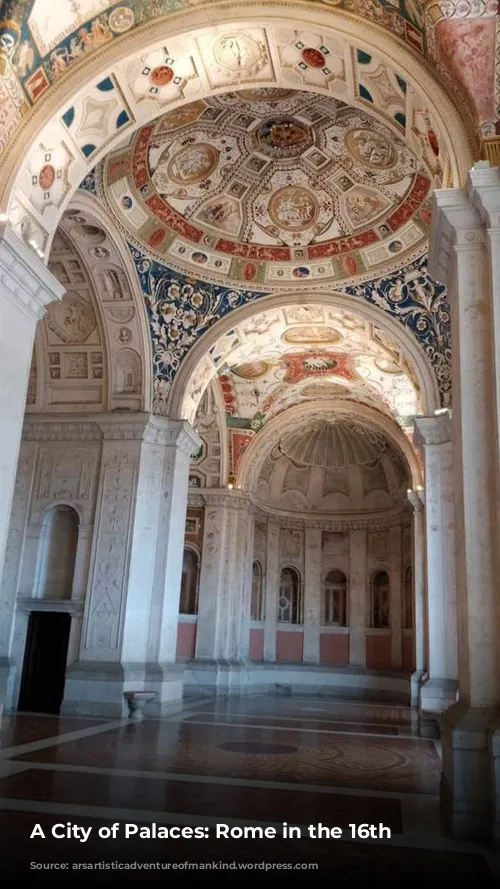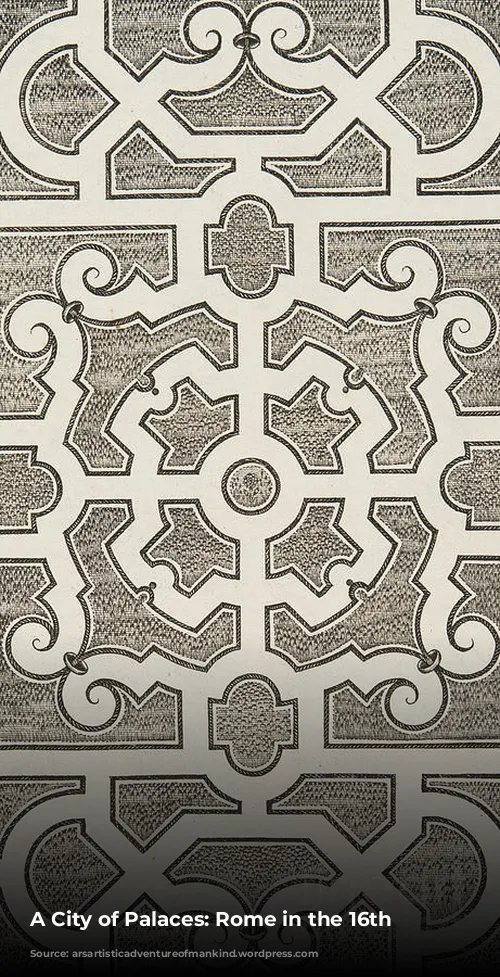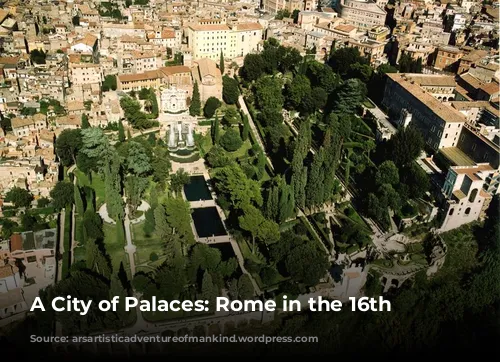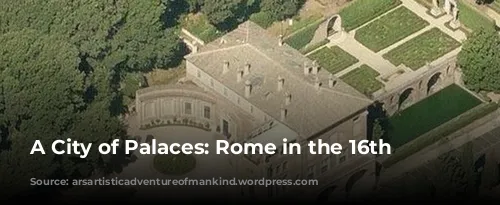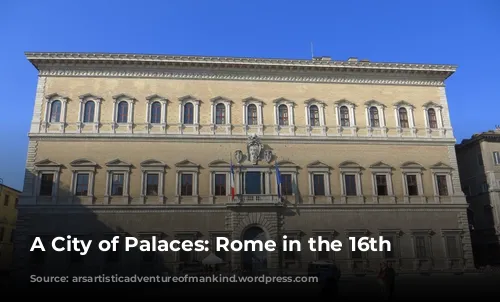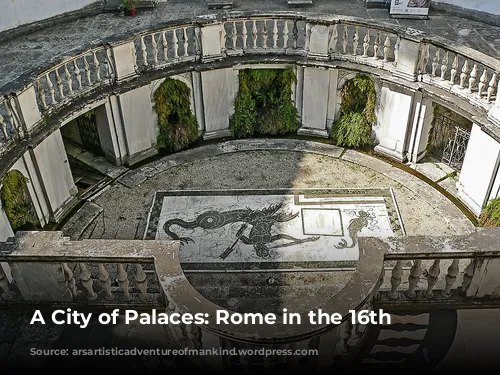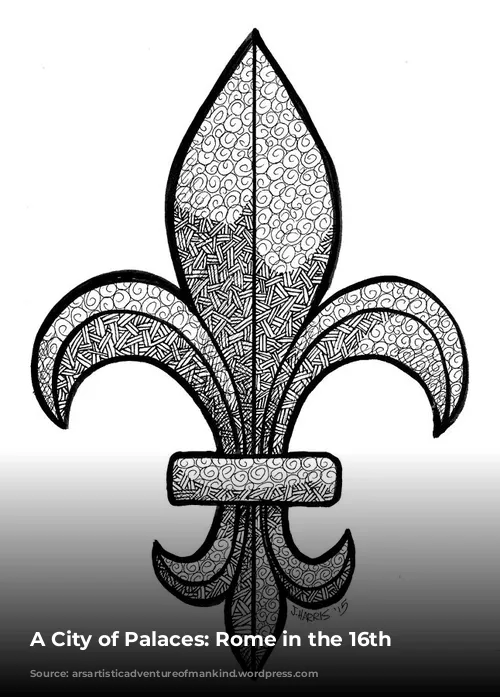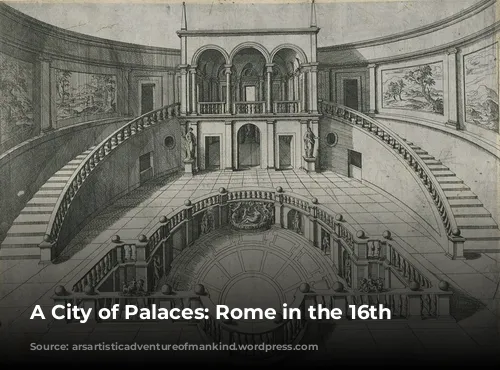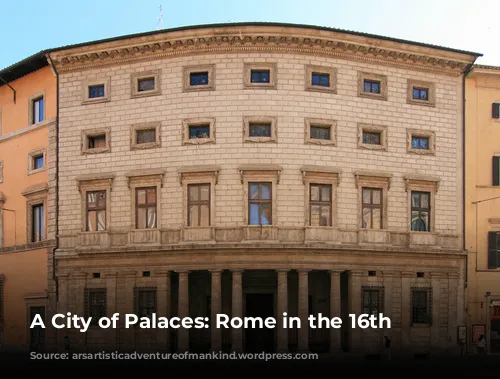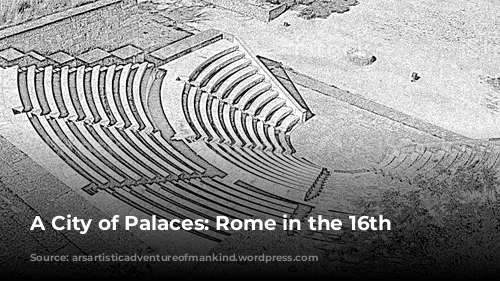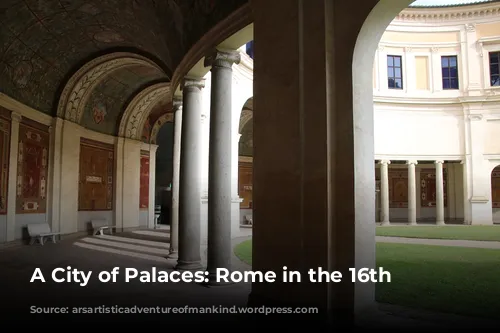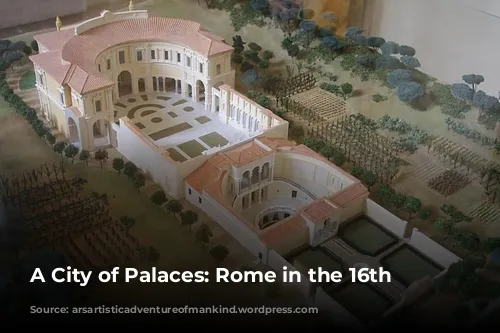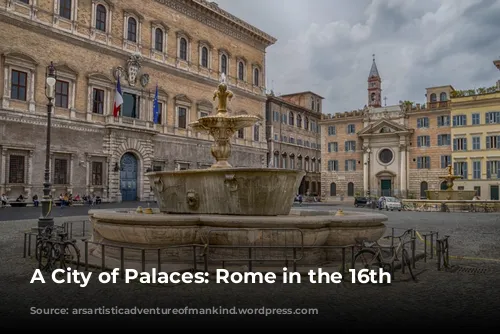Rome in the 16th century was a hotbed of architectural creativity, with grand palaces and opulent villas springing up across the city. The era saw the construction of some of the most iconic buildings in Roman history, reflecting the power and wealth of the Church and the elite families who graced the city.
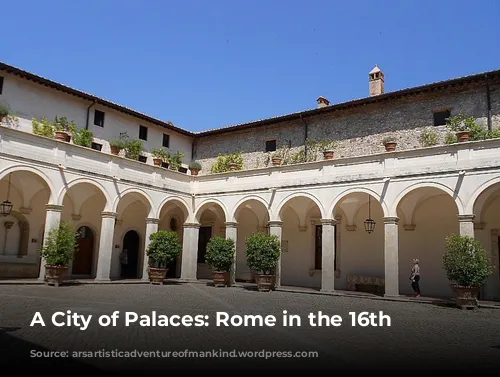
Palaces of Power and Prestige
Imagine a city where cardinals and popes vied for the most stunning residences, each more magnificent than the last. This was the reality of 16th-century Rome, where the construction of grand palaces became a symbol of status and influence.
The Palazzo Farnese, a masterpiece by Antonio da Sangallo the Younger, is a prime example of this architectural ambition. Built for the powerful Farnese family, the palace boasts a monumental courtyard, grand galleries, and opulent rooms adorned with ornate ceilings and colossal fireplaces. The building’s imposing facade even faced a carefully designed square with two fountains, highlighting the family’s commitment to grandeur.
Another notable palace is the Palazzo Massimo alle Colonne, built by Baldassare Peruzzi for the Massimo family. Although constructed after the devastating sack of Rome in 1527, the palace exudes an air of stately elegance. Its austere facade, with its simplified moldings and tall, rectangular windows, reflects the era’s fascination with classical architecture. The building’s semi-public portico, with its stone benches, allowed the Massimo family to connect with the common people, while the statues that adorn the portico served as a constant reminder of the family’s lineage and prestige.
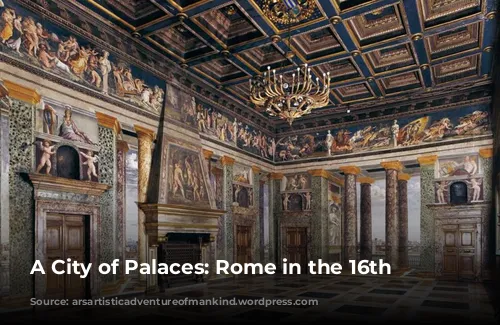
Villas of Leisure and Delight
While palaces represented the power of the elite, villas provided a sanctuary for leisure and artistic expression. These grand country estates, often filled with treasures from antiquity and the Renaissance, offered a retreat from the hustle and bustle of city life.
The Villa Farnesina, designed by Baldassare Peruzzi for the wealthy banker Agostino Chigi, is a testament to the lavish lifestyle of the 16th-century elite. Its exterior, characterized by simple lines and recessed pilasters, provides a stark contrast to the spectacular interior, where rooms like the “Hall of Perspectives” showcase the masterful illusionary art of the Renaissance. This breathtaking villa, once a haven for opulent festivities, now stands as a testament to the artistic genius of the era.
The Villa Medici, built by the Medici family on the Pincian Hill, is another stunning example of villa architecture. Its simple facade blends seamlessly with the surrounding gardens, while the terrace offers breathtaking views of the city. The villa’s rear facade, with its rustic charm and Florentine boxwood hedges, evokes the family’s Tuscan origins.
The Villa Madama, a sprawling estate designed by Raphael, is perhaps the most luxurious of them all. Although left unfinished, the villa still showcases the breathtaking elegance of Raphael’s artistic vision. Its eastern facade, overlooking a garden terrace, features exquisite “grotesques” inspired by the recently rediscovered decorations of Nero’s “Domus Aurea,” demonstrating the profound influence of classical art on Renaissance architecture.
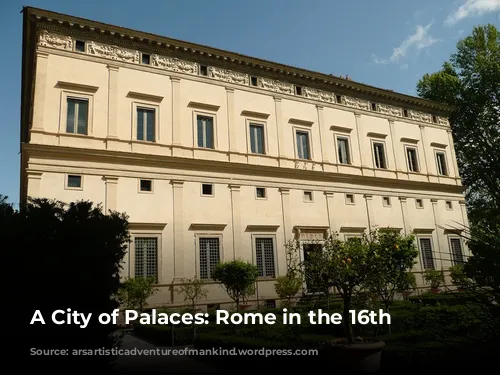
Gardens of Water and Wonder
The gardens of these grand palaces and villas were no less impressive than the buildings themselves. The abundance of water from Rome’s ancient aqueducts allowed architects to create breathtaking landscapes adorned with fountains, ponds, and waterfalls.
The Villa d’Este, built by Cardinal Ippolito II d’Este in Tivoli, is a masterpiece of garden design. Water cascades through thousands of fountains and waterfalls, creating a symphony of sound and movement. The artful arrangement of cypress trees, cisterns, and rustic architectural elements define the lavish Italian garden, a tradition that continues to inspire garden designers today.
Rome in the 16th century was not just a city of palaces and villas; it was a living museum of art, architecture, and the human spirit. These grand structures, with their intricate gardens and sumptuous interiors, provide a glimpse into a bygone era of elegance, power, and artistic innovation. They stand as a testament to the enduring legacy of the Renaissance and its profound influence on the world we live in today.
